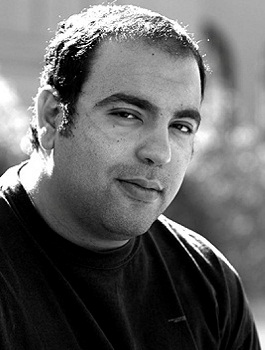By Joseph Nye
CAMBRIDGE: Last year, the leaders of all five permanent members of the United Nations Security Council visited India, accompanied by delegations of business leaders. The Indian economy has been growing at more than 8 percent annually, making it increasingly attractive for trade and investment. When US President Barack Obama visited in November, he supported permanent membership of the UN Security Council for India. So did British Prime Minister David Cameron, French President Nicolas Sarkozy, and Russian President Dmitri Medvedev. But the last to visit, Chinese Prime Minister Wen Jiabao, said nothing at all about it.
Official pronouncements stress friendly relations between India and China, and some trade analysts argue that the two giant, rapidly growing markets will become an economic “Chindia.” When Premier Wen visited several years ago, he signed a comprehensive five-year strategic cooperation pact. As Indian Prime Minister Manmohan Singh put it at the time, “India and China can together reshape the world order.”
Such statements reflect a considerable change from the hostility that bedeviled Indian-Chinese relations following the two countries’ 1962 war over a disputed border in the Himalayas. Nevertheless, strategic anxiety lurks below the surface, particularly in India.
China’s GDP is three times that of India’s, its growth rate is higher, and its defense budget has been increasing. The border dispute remains unsettled, and both countries vie for influence in neighboring states such as Myanmar. And, in recent years, China has worked behind the scenes to prevent permanent Security Council membership from conveying great-power status on India.
But talk of India as a future great power is unavoidable, and some Indians predict a tri-polar world, anchored by the US, China, and India, by mid-century. India’s population of 1.2 billion is four times that of the US, and likely to surpass China’s by 2025. Vijay Joshi of St John’s College, Oxford, argues that, “if we extrapolate present trends, India will have the world’s third largest national income (after the US and China) within 25 years.”
For decades, India suffered from what some called the “Hindu rate of economic growth” of a little over 1 percent per year. After independence in 1947, India followed an inward-looking policy that focused on heavy industry. But it turned out that the rate of economic growth owed less to Hindu culture than to imported British Fabian (and other) socialist economic planning.
After market-oriented reforms in the early 1990s, growth rates soared, with projections of double-digit growth in the future. Martin Wolf of the Financial Times calls India a “premature superpower” — a country with low living standards but a huge economy. He thinks that the Indian economy will be bigger than Britain’s in a decade and bigger than Japan’s in two. India has an emerging middle class of several hundred million, and English is an official language, spoken by 50-100 million people. Building on that base, Indian information industries are able to play a major global role.
India has significant hard-power resources as well, with an estimated 60-70 nuclear weapons, intermediate-range missiles, a space program, 1.3 million military personnel, and annual military expenditure of nearly $30 billion, or 2 percent of the world total. In terms of soft power, India has an established democracy, and a vibrant popular culture with transnational influence. India has an influential diaspora, and its motion picture industry, “Bollywood,” is the largest in the world in terms of the number of films produced yearly, out-competing Hollywood in parts of Asia and the Middle East.
At the same time, India remains very much an underdeveloped country, with hundreds of millions of illiterate, destitute citizens. Around one-third of Indians live in conditions of acute poverty, and India accounts for roughly one-third of the world’s poor. India’s GDP of $3.3 trillion compares to China’s $5 trillion, and is 20 percent that of the United States. As a result, India’s per capita income of $2,900 (in purchasing-power-parity terms) is one-half of China’s and one-fifteenth that of the US.
Even more striking, while 91 percent of the Chinese population is literate and 43% is urban, the numbers for India are only 61 percent and 29 percent, respectively. Each year, India produces about twice as many engineering and computing graduates as America, but The Economist reports that “only 4.2 percent are fit to work in a software product firm, and just 17.8 percent are employable by an IT services company, even with six months training.”
A symptom of this is India’s poor performance in international comparisons of universities: the 2009 Asian University Rankings, prepared by the higher education consultancy QS, shows the top Indian institution to be the Indian Institute of Technology in Bombay, at number 30. Ten universities in China and Hong Kong are ranked higher. High-tech exports are only 5 percent of India’s total exports, compared to 30 percent for China.
India is thus unlikely to develop the power resources to become an equal to China in the next decade or two. And, while the two countries signed agreements in 1993 and 1996 that promised a peaceful settlement of the border dispute that led them to war in l962, it is worth noting that, just prior to India’s nuclear tests in March l998, India’s defense minister described China as India’s “potential enemy number one.” More recently, in 2009, the border issue flared again.
Indian officials are generally discrete in public about relations with China, but in private their concerns remain intense. Rather than becoming an ally, India is more likely to become one of the Asian countries that will tend to balance China’s strategic rise.
Joseph S. Nye, Jr. is a professor at Harvard University. His new book, The Future of Power, will be published in February 2011. This commentary is published by Daily News Egypt in collaboration with Project Syndicate, www.project-syndicate.org.


